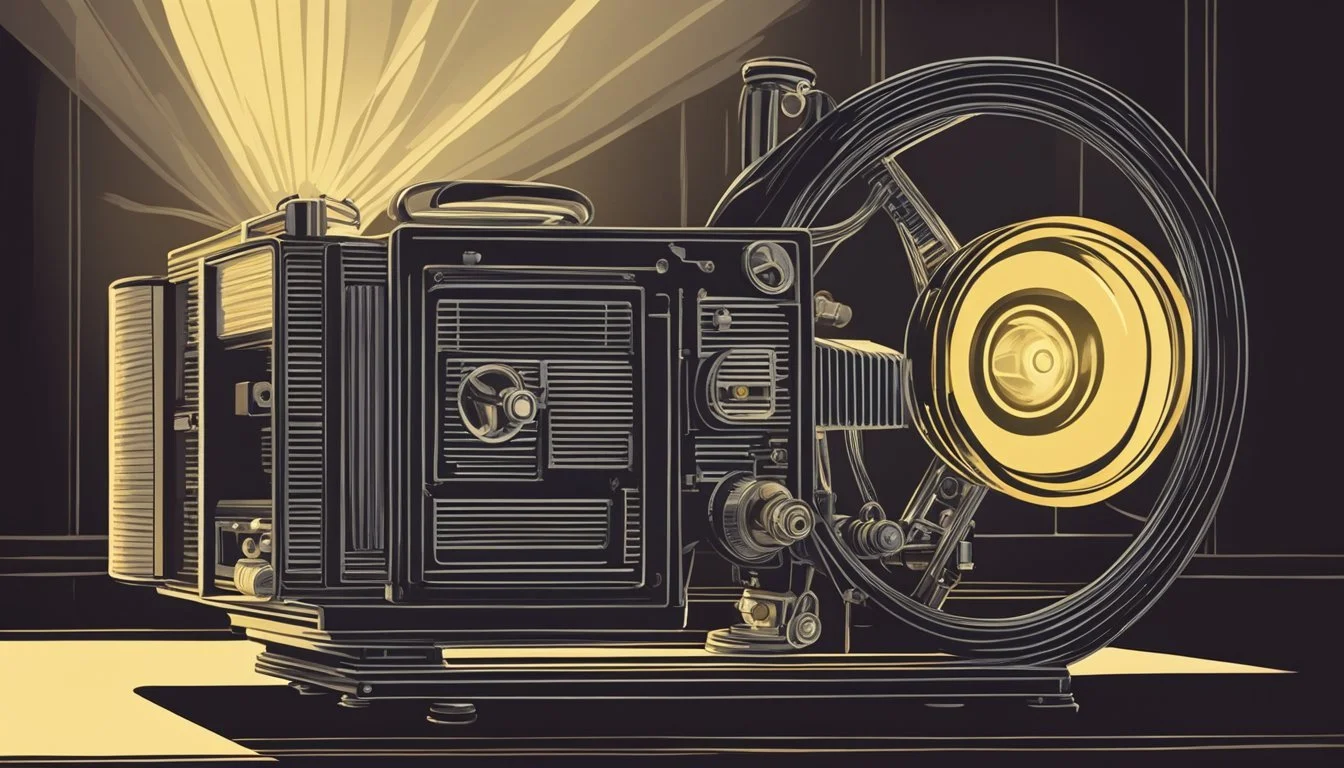Top Documentaries of 1978
A Year of Groundbreaking Non-Fiction Films
1978 was a significant year for documentary filmmaking, with several influential and thought-provoking works released. These documentaries covered a wide range of subjects, from social issues to cultural phenomena, providing viewers with unique insights into various aspects of life and society.
The top documentaries of 1978 showcased the power of non-fiction storytelling and left a lasting impact on the genre. Many of these films employed innovative techniques and approached their subjects with depth and nuance, setting new standards for documentary filmmaking in the years to come.
1) The Last Waltz (1978)
Martin Scorsese directed this iconic concert film documenting The Band's farewell performance. The movie captures the group's final show at San Francisco's Winterland Ballroom on Thanksgiving Day, 1976.
The Last Waltz features stellar performances by The Band and an array of guest artists. Rock legends like Bob Dylan, Eric Clapton, and Neil Young join the group on stage for memorable collaborations.
Scorsese's direction elevates the film beyond a typical concert recording. His careful attention to lighting, camera angles, and editing creates a visually stunning experience that complements the music.
Interspersed between songs are candid interviews with band members. These segments offer insights into the group's history and the reasons behind their decision to stop touring.
The Last Waltz stands as a pinnacle of concert documentaries. It not only preserves The Band's final performance but also serves as a celebration of an era in American rock music.
More information on The Last Waltz
2) Scared Straight! (1978)
Scared Straight! is a powerful documentary directed by Arnold Shapiro. The film follows a group of juvenile delinquents as they participate in a three-hour session with hardened convicts at Rahway State Prison.
The inmates, known as the "lifers," confront the young offenders with harsh realities of prison life. Through intense verbal interactions, they attempt to deter the teens from a life of crime.
Narrated by Peter Falk, the documentary provides a raw and unfiltered look at this controversial intervention program. It captures the emotional reactions of the juveniles as they face the consequences of their choices.
Scared Straight! gained widespread attention and sparked debates about juvenile crime prevention. The film's impact led to similar programs being implemented across the United States.
Arnold Shapiro's work earned critical acclaim, winning the Academy Award for Best Documentary Feature in 1979. The documentary's success also inspired several follow-up films and a television series.
More information on Scared Straight!
3) Power of Grayskull (2018)
"Power of Grayskull" is a documentary that explores the history of the He-Man and the Masters of the Universe franchise. The film examines the creation and impact of the popular toy line and media franchise.
Directed by Randall Lobb and Robert McCallum, the documentary features interviews with key figures involved in the franchise's development. It includes insights from artists, creators, and executives who contributed to He-Man's success.
The film covers various aspects of the franchise, including the toys, comics, cartoons, and movies. It traces the evolution of He-Man from its inception to its enduring popularity in pop culture.
Notable interviewees include Dolph Lundgren, who starred in the 1987 live-action He-Man film, and Frank Langella, who played Skeletor. Their perspectives offer unique insights into the franchise's cinematic adaptations.
"Power of Grayskull" provides a comprehensive look at the franchise's impact on popular culture and its lasting legacy. The documentary appeals to both long-time fans and those new to the He-Man universe.
4) The Grateful Dead Movie (1977)
The Grateful Dead Movie captures the essence of the band's live performances during their 1974 concerts at Winterland in San Francisco. Co-directed by Jerry Garcia and Leon Gast, this documentary offers fans an immersive experience of the Grateful Dead's music and culture.
The film showcases the band's unique improvisational style and the devoted following of their fans, known as Deadheads. It features extended live performances of classic songs, interspersed with backstage footage and psychedelic animations.
Shot over a five-night run in October 1974, the concerts documented in the film marked the beginning of a hiatus for the band. The October 20 show was billed as "The Last One" before their return to touring in 1976.
The Grateful Dead Movie provides an intimate look at the band's creative process and the communal atmosphere of their concerts. It remains a treasured artifact for fans and a valuable historical document of the 1970s rock scene.
More information on The Grateful Dead Movie
5) Girlfriends (1978)
Girlfriends is a groundbreaking American independent film directed by Claudia Weill. The movie follows Susan, a young Jewish photographer in New York City, as she navigates life and career after her best friend and roommate moves out to get married.
Melanie Mayron stars as Susan, delivering a nuanced performance as she struggles to establish herself as an artist while working as a bar mitzvah photographer. The film explores themes of female friendship, independence, and personal growth.
Girlfriends stands out for its realistic portrayal of women's experiences and relationships. It offers a refreshing perspective on urban life in the late 1970s, focusing on the challenges faced by young, ambitious women.
The film received critical acclaim for its authentic storytelling and relatable characters. It paved the way for future independent films and influenced generations of filmmakers interested in exploring women's stories.
Girlfriends features supporting performances by Eli Wallach and Christopher Guest, adding depth to the cast. The movie's honest depiction of female friendships and personal journeys continues to resonate with audiences today.
6) Blue Collar
Blue Collar (1978) marks Paul Schrader's directorial debut, showcasing his keen eye for social commentary. The film stars Richard Pryor, Harvey Keitel, and Yaphet Kotto as three Detroit autoworkers.
Set against the backdrop of a struggling Rust Belt city, Blue Collar explores the complexities of union politics and working-class life. The story follows the trio as they attempt to rob their own labor union, uncovering corruption along the way.
Schrader's script, co-written with his brother Leonard, offers a nuanced critique of both union practices and corporate exploitation. The film's gritty realism and powerful performances bring authenticity to its portrayal of blue-collar struggles.
Blue Collar received critical acclaim for its honest depiction of race relations and class tensions in 1970s America. It remains a thought-provoking examination of the challenges faced by working-class Americans.
More information on Blue Collar (1978)
7) I, a Woman Part II (1968)
I, a Woman Part II is an erotic drama film directed by Mac Ahlberg. It serves as a sequel to the controversial 1965 film I, a Woman. The movie continues to explore themes of female sexuality and liberation.
Gio Petré stars as Siv, reprising her role from the first film. The story follows Siv's ongoing sexual adventures and relationships as she navigates life in Copenhagen. The film pushes boundaries with its explicit content and frank depictions of sexuality.
I, a Woman Part II gained attention for its provocative subject matter and risqué scenes. It capitalized on the success of its predecessor, which had helped popularize sexploitation films in mainstream cinemas.
The film's release contributed to the growing trend of European erotic cinema in the late 1960s. It appealed to audiences seeking more daring and adult-oriented content on screen. While not considered a documentary, the film offers a fictionalized glimpse into changing sexual mores of the era.
More information on I, a Woman Part II
8) The Black Pearl
The Black Pearl (1978) is a documentary that explores the pearl diving industry in a Mexican fishing village. It follows the story of Ramon, a young man aspiring to inherit his father's pearl-diving business.
The film offers a glimpse into the dangerous and demanding world of pearl diving. It showcases the skills and techniques required to harvest pearls from the ocean depths.
Director Saul Swimmer captures the beauty of the Mexican coastline and underwater scenes. The documentary also highlights the cultural significance of pearl diving in the local community.
Viewers gain insight into the economic importance of the pearl industry for the village. The film touches on the challenges faced by divers, including health risks and uncertain harvests.
The Black Pearl provides a unique look at a traditional occupation rarely seen on screen. It combines elements of nature documentary and human interest storytelling.
More information about The Black Pearl
9) Straight Time
Straight Time (1978) is a gritty crime drama starring Dustin Hoffman as Max Dembo, an ex-convict struggling to reintegrate into society. The film offers a raw portrayal of life after prison and the challenges of avoiding a return to criminal behavior.
Directed by Ulu Grosbard, Straight Time features strong performances from its cast, including Theresa Russell and Harry Dean Stanton. The screenplay is based on Edward Bunker's novel "No Beast So Fierce," lending authenticity to its depiction of criminal life.
Set in Los Angeles, the film follows Dembo as he attempts to navigate the parole system and find legitimate work. His efforts are complicated by a demanding parole officer and the temptation to return to his old ways.
Straight Time explores themes of rehabilitation, societal expectations, and the difficulties of breaking free from a criminal past. Its unflinching look at recidivism and the flaws in the justice system resonated with critics and audiences alike.
More information on Straight Time
10) Five Days One Summer (1982)
Five Days One Summer is a romantic drama film directed by Fred Zinnemann. Set against the stunning backdrop of the Swiss Alps, the movie stars Sean Connery as Douglas Meredith, a middle-aged man on a mountain climbing trip.
Accompanying Douglas is his young lover Kate, played by Betsy Brantley. Their relationship becomes strained as they face the challenges of the treacherous mountain terrain and their own complex emotions.
The film explores themes of love, obsession, and the consequences of forbidden relationships. It delves into the psychological depths of its characters as they navigate both physical and emotional landscapes.
Zinnemann's direction showcases the breathtaking alpine scenery, using it as a metaphor for the characters' inner turmoil. The cinematography captures the beauty and danger of the mountains, creating a visually striking experience.
Five Days One Summer was Zinnemann's final film, capping off a distinguished career in Hollywood. While not as commercially successful as some of his earlier works, it remains a thoughtful and atmospheric exploration of human relationships.
Historical Context
The late 1970s marked a period of significant cultural shifts and technological advancements in filmmaking. These factors shaped the documentaries produced during this era, influencing both their content and style.
Cultural and Social Climate of the Late 1970s
The United States experienced a mix of social progress and economic challenges in 1978. The civil rights movement had made substantial gains, but racial tensions persisted. Women's rights continued to advance, with more women entering the workforce.
Environmental awareness grew, leading to increased activism. The energy crisis of the early 1970s still impacted daily life and policy decisions. Politically, the country was adapting to post-Watergate reforms and a new presidential administration under Jimmy Carter.
Popular culture embraced disco music, while punk rock emerged as a counter-cultural force. Television remained a dominant medium, but cable TV began to offer more diverse programming options.
Advancements in Filmmaking Techniques
Documentary filmmaking in 1978 benefited from technological improvements in camera equipment and sound recording. Lighter, more portable cameras allowed for greater mobility and spontaneity in filming.
Sync sound technology improved, enabling better audio capture in various environments. This enhanced the ability to record interviews and ambient sounds with higher quality.
Film stock became more sensitive, allowing for better low-light shooting. This expanded the range of locations and situations that could be captured on film.
Editing techniques evolved, with more sophisticated tools for cutting and splicing footage. This allowed for more complex narrative structures and visual storytelling in documentaries.
Influence and Legacy
The documentaries of 1978 left an indelible mark on the film industry, shaping future documentary filmmaking and expanding storytelling techniques. Their impact continues to resonate decades later.
Impact on Future Documentaries
1978 documentaries paved the way for more experimental and daring approaches in non-fiction filmmaking. Films like "Harlan County, USA" and "The Last Waltz" set new standards for cinéma vérité and concert documentaries respectively.
These works inspired a generation of filmmakers to push boundaries and explore unconventional subjects. The success of "Gates of Heaven" encouraged documentarians to find compelling stories in unexpected places.
Many 1978 documentaries tackled social issues head-on, influencing future filmmakers to use their craft as a tool for advocacy and change. This approach became more prevalent in subsequent decades.
Contributions to Documentarian Storytelling
1978 saw significant advancements in documentary narrative techniques. Filmmakers began blending observational footage with interviews and archival material more seamlessly.
The use of intimate, personal stories to illuminate broader issues became more refined. This storytelling method, exemplified in "Word Is Out," proved highly effective in engaging audiences emotionally.
Technical innovations in portable cameras and sound equipment allowed for more immersive experiences. Documentarians could capture spontaneous moments with greater ease, adding authenticity to their narratives.
The balance between objectivity and artistic expression shifted, with many 1978 documentaries embracing a more subjective approach. This trend encouraged future filmmakers to incorporate their unique perspectives into their work.











